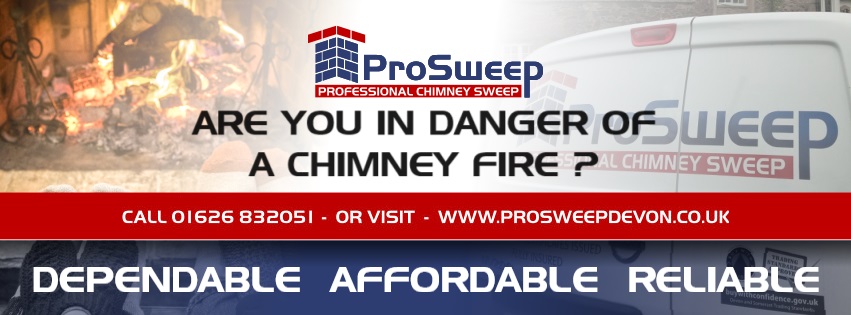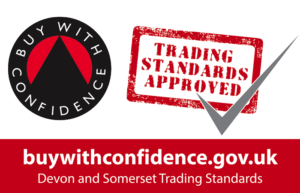
Chimney Fires: A Preventable Danger – Protect Your Home with ProSweep Devon
Chimney fires are a serious threat to homes and lives, but they are entirely preventable. A dirty chimney is a leading cause, highlighting the importance of regular chimney sweeping. While some chimney fires are dramatic and easily noticed, others burn slowly and silently, causing significant damage without being detected. Don’t wait for a disaster – prioritize chimney safety with ProSweep Devon.
The Dangers of Chimney Fires:
Even slow-burning chimney fires reach extremely high temperatures, damaging chimney structures and potentially igniting nearby combustible materials. This can lead to structural damage, house fires, and even loss of life. The intense heat can melt mortar, crack tiles, and cause liners to collapse in masonry chimneys, creating pathways for flames to reach wooden structural elements. Metal-lined chimneys are also vulnerable, with fires causing buckling and warping that necessitates complete replacement.
Preventing Chimney Fires:
ProSweep Devon recommends regular chimney sweeping to remove flammable creosote buildup. This is the most crucial step in preventing chimney fires. In addition to professional cleaning, you can take these precautions:
- Burn seasoned wood: Dry wood burns hotter and cleaner, producing less smoke and creosote. Dryness is key, regardless of the wood type.
- Build smaller, hotter fires: These fires burn more completely, minimizing smoke and creosote buildup.
- Avoid burning inappropriate materials: Never burn cardboard, paper, rubbish, or Christmas trees, as these can easily spark a chimney fire.
Causes of Chimney Fires:
Chimney fires are typically caused by the buildup of creosote, a flammable residue produced when exhaust gases from burning fuel cool and condense in the chimney. Factors that contribute to creosote buildup include:
- Restricted airflow: Poor ventilation can lead to incomplete combustion and increased creosote production.
- Unseasoned wood: Wet wood produces more smoke and creosote.
- Cold chimney temperatures: External chimneys, in particular, are more prone to creosote buildup due to lower temperatures.
Recognizing a Chimney Fire:
Detecting a chimney fire early can minimize damage. Look for these signs:
- Puffy, rainbow-streaked creosote: This indicates expansion due to heat.
- Warped metal components: Check the damper, smoke chamber, connector pipe, and metal chimney.
- Cracked or missing flue tiles: Inspect for damage.
- Discolored or distorted rain cap/flue: Look for signs of heat damage.
- Creosote flakes: Check the roof and ground for debris.
- Damaged roofing materials: Look for signs of fire or heat exposure.
- Cracks in masonry: Inspect for structural damage.
- Smoke escaping through mortar joints: This indicates a breach in the chimney’s integrity.
What to Do During a Chimney Fire:
Your safety is paramount. If you suspect a chimney fire:
- Call 999 immediately.
- Reduce oxygen supply: Close air vents and flue dampers on stoves. For open fires, carefully splash water on the flames.
- Move flammable materials: Keep furniture and other combustibles away from the fireplace and chimney breast.
- Block the fireplace opening (open fires only, if safe): Use a non-combustible material.
- Monitor chimney breast temperature: Feel the chimney breast, especially on upper floors. Move furniture away if it’s hot.
- Do not pour water on a stove: Close the stove door instead.
- Do not use salt: Salt can create harmful chlorine gas.
- Ensure fire brigade access: Make sure they can access the loft space.
- Wet down the roof (severe cases only): If there’s a risk of fire spreading to the roof, wet it down (avoiding the chimney itself).
- Use a fire extinguisher: Aim it into the fireplace or wood stove.
- Close glass doors on fireplaces.
- Close air inlets on wood stoves.
- Monitor the exterior chimney temperature: Continue monitoring for at least three hours after the fire appears to be out.
After a Chimney Fire:
Do not relight any appliances until a professional has inspected your chimney. Contact ProSweep Devon for a thorough assessment, damage report, and advice on making your chimney safe to use again. We’ll identify the cause of the fire and help you prevent future incidents.
Proud Member of the Devon Trading Standards Buy with Confidence Scheme
At ProSweep, we take immense pride in being part of the Devon Trading Standards Buy with Confidence scheme. This prestigious accreditation means that our services are rigorously inspected, vetted, and approved, giving you complete peace of mind when you book with us. Trust in our commitment to quality and customer satisfaction

- · Bishopsteignton
- · Bovey Tracey
- · Chagford
- · Chudleigh
- · Dartmoor
- · Dawlish
- · Kingskerswell
- · Kingsteignton
- · Liverton
- · Lustleigh
- · Manaton
- · Marldon
- · Moretonhampstead
- · Newton Abbot
- · Paignton
- · Teignmouth
- · Torquay
